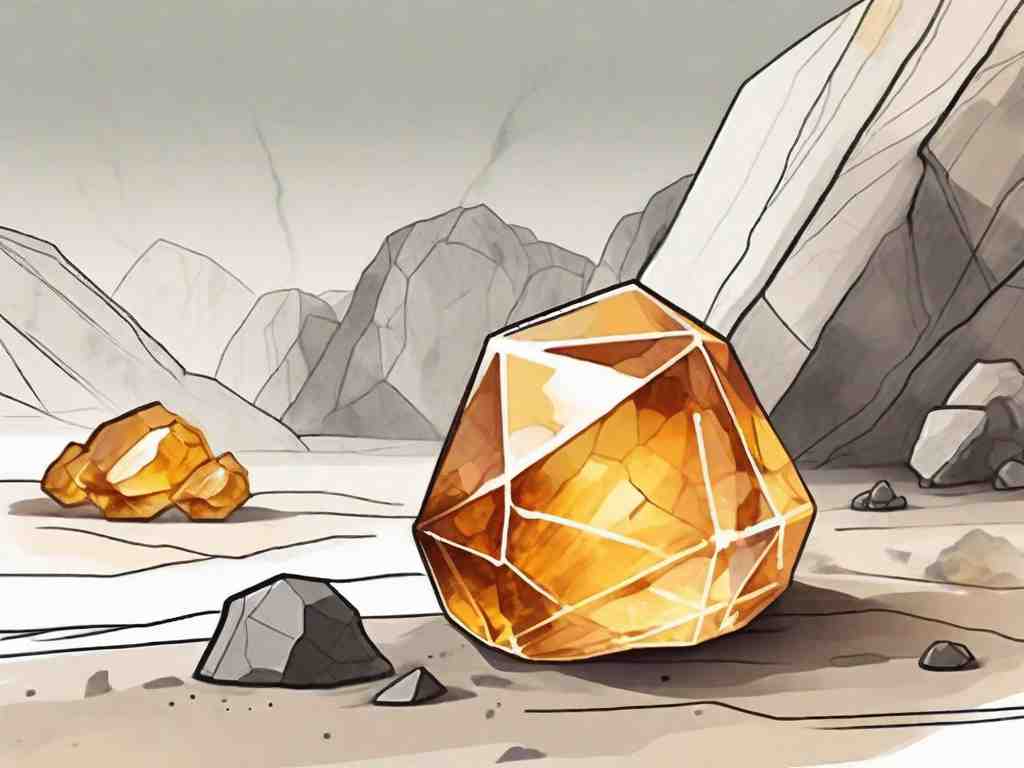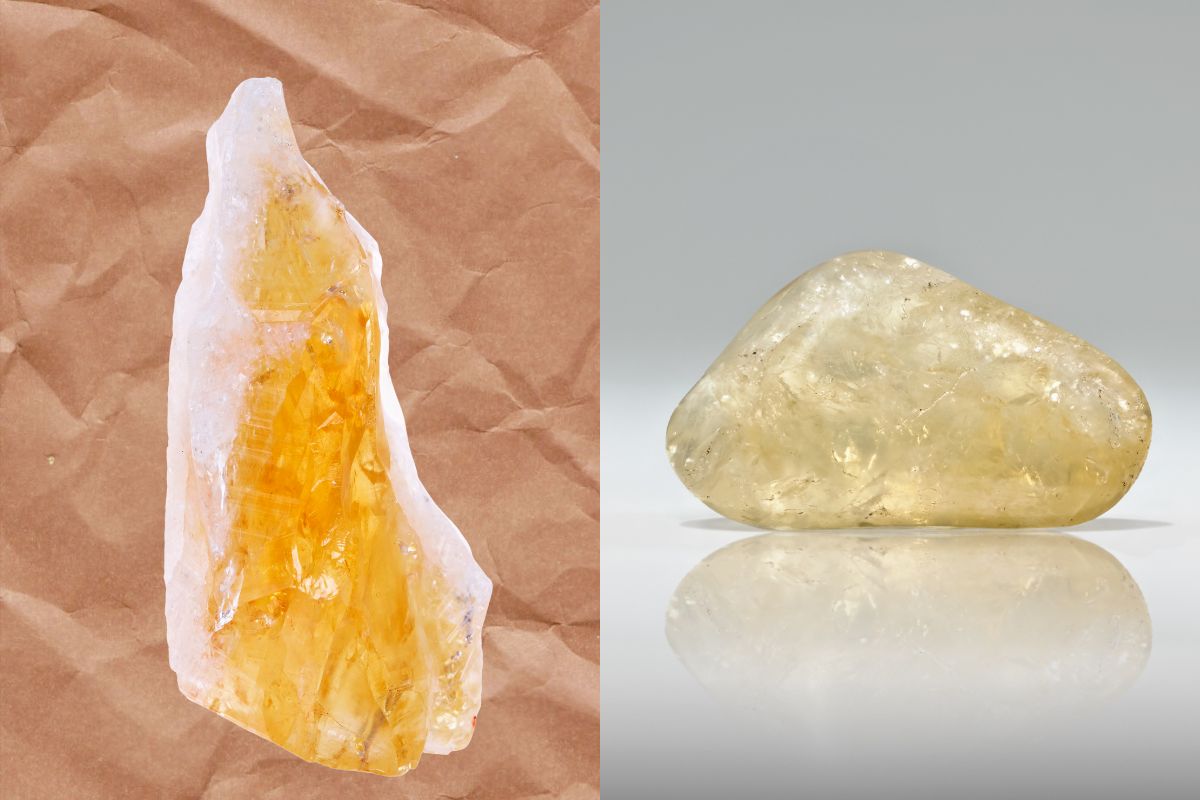Reimagine the allure of citrine, a stunning gemstone prized for its vibrant hues. Understanding the hardness of citrine is essential for jewelry enthusiasts and collectors, as it informs decisions on durability and care for these exquisite pieces.
Understanding the Hardness and Durability of Citrine
When it comes to fine gemstones, understanding their performance in everyday use is essential. One of the most critical aspects of any gemstone is its resilience, which plays a vital role in how it can be used in jewelry. The hardness of citrine and its related properties determine not just how the stone looks but how long it can maintain that illustrious appearance.

Exploring the Citrine Hardness Scale
At the core of evaluating gemstones is the citrine hardness scale, which places stones according to their scratch resistance. Citrine is rated at a particular level on this scale, making it a good choice for everyday wear. This rating signifies how well citrine can withstand the rigors of normal use, helping enthusiasts understand its potential longevity.
Gemstone enthusiasts often compare citrine’s position on this scale with other popular stones. Many find citrine’s scratch resistance satisfactory for various types of jewelry, from earrings to rings. This durability means that with proper care, citrine can remain a cherished part of any collection for years.
Evaluating the Hardness of Citrine Crystal
Examining where citrine ranks as a hardness of citrine crystal provides insight into its use in fine jewelry. The crystal structure is inherently robust, designed to endure more than just passive beauty. Users should appreciate how the aspects of citrine perform against daily wear and environmental factors.
In practice, citrine’s strength allows it to withstand occasional bumps and scratches typical in jewelry. Although it is more durable than softer stones, wearers should still be aware of how their jewelry interacts with other materials, as even the most resilient gemstones can be scratched under specific conditions.
Essential Care Tips for Citrine Jewelry
To maintain the beauty and longevity of any gemstone, proper care is a must. This is especially true for citrine, which requires specific attention to keep it looking its best. Knowing how to care for your citrine can enhance its appearance and lifespan.
Practical Citrine Care Tips for Long-Lasting Beauty
Employing effective care measures makes a significant difference in retaining the brilliance of citrine. For daily wear, simply cleaning the stone regularly with a soft cloth can prevent dirt and oils from dulling its shine. Using mild soap and warm water for a more thorough clean is also effective, but avoid harsh chemicals.

Additionally, storing citrine properly is essential for its maintenance. It’s wise to keep citrine jewelry separate from other pieces, as its ability to resist scratches is not impervious. Using a pouch or designated jewelry box can prevent unintentional damage, keeping the gemstone pristine and ready to wear.
Navigating Citrine vs Quartz Hardness
When discussing citrine, it’s essential to compare its properties with other similar stones, particularly quartz. Understanding citrine vs quartz hardness can provide greater clarity on how citrine ranks as a durable gemstone. Citrine, a variety of quartz, inherits some of quartz’s renowned durability, making it an appealing choice for many jewelry lovers.
While both citrine and quartz measure similarly on the hardness scale, citrine often stands out due to its particular visual appeal, providing uniqueness in its durability. This character makes citrine a flexible stone, ideal for an assortment of jewelry styles while ensuring resilience against time.
Assessing Citrine Quality with a Focus on Scratch Resistance
For those looking to invest in citrine, understanding how to assess its quality is invaluable. Quality evaluation is often highlighted by a gemstone’s durability and resistance to scratching, which are both critical components of overall value.

The Role of Citrine Scratch Resistance in Quality Assessment
A significant aspect that plays into citrine’s quality is its citrine scratch resistance. When assessing gemstones, looking at how readily a stone can be scratched helps determine its overall worth. Citrine’s comparatively high scratch resistance makes it a favorite among jewelry enthusiasts who prefer longevity without sacrificing aesthetics.
In addition, assessing how well citrine maintains its surface when compared to other stones can only enhance the decision-making process when purchasing. Emphasizing these aspects enables buyers to invest wisely in pieces that will last, making informed choices about their jewelry collection.
Comprehensive Citrine Quality Assessment Techniques
Beyond just looking at surface resilience, a thorough citrine quality assessment includes examining several factors such as clarity and visual appeal. By properly evaluating each aspect, buyers can gain confidence in their choices. Observing a stone’s characteristics helps in understanding its unique value while ensuring it will withstand time’s test.
For the discerning buyer, knowing how to look beyond what is visible to the naked eye can be instrumental. Understanding all points of assessment solidifies citrine as a robust option that continues to shine—both in aesthetic and durability—making it a favored choice in jewelry.
Shop for beautiful citrine, knowing that the hardness of citrine ensures its suitability for various jewelry styles and everyday wear. This information empowers enthusiasts to appreciate and maintain their citrine pieces with confidence and care.
